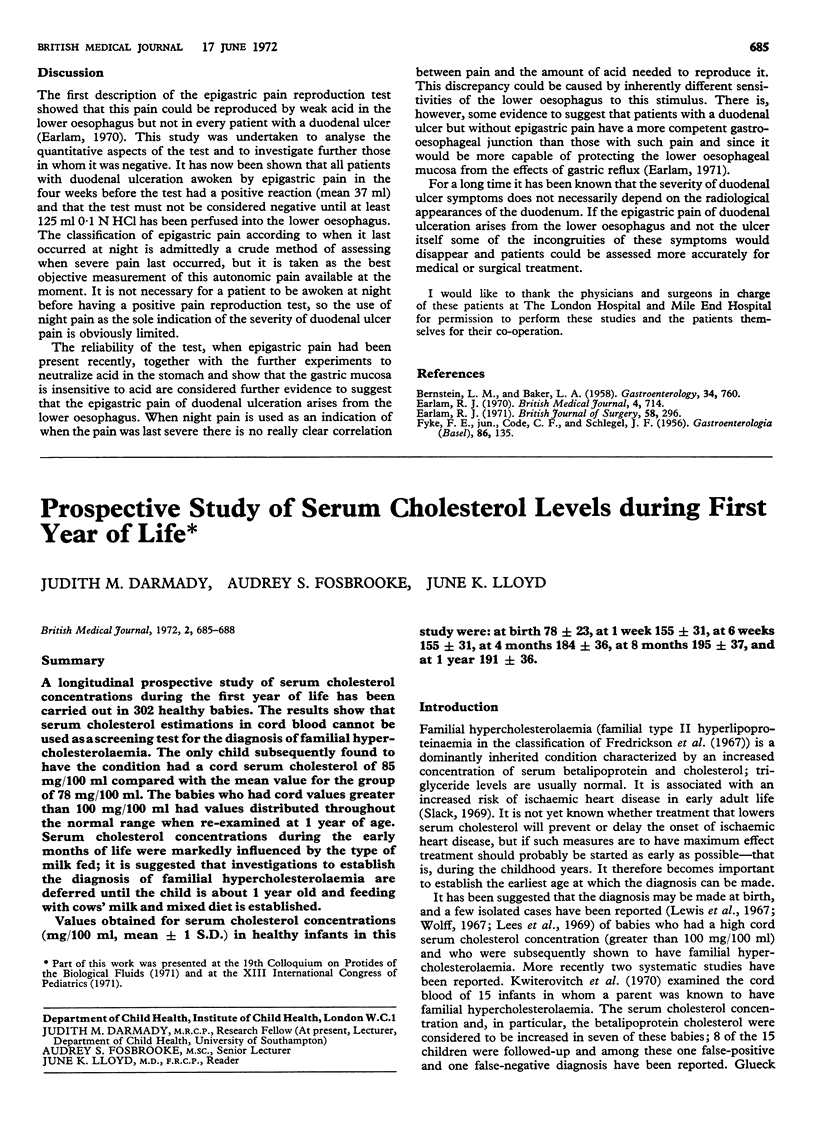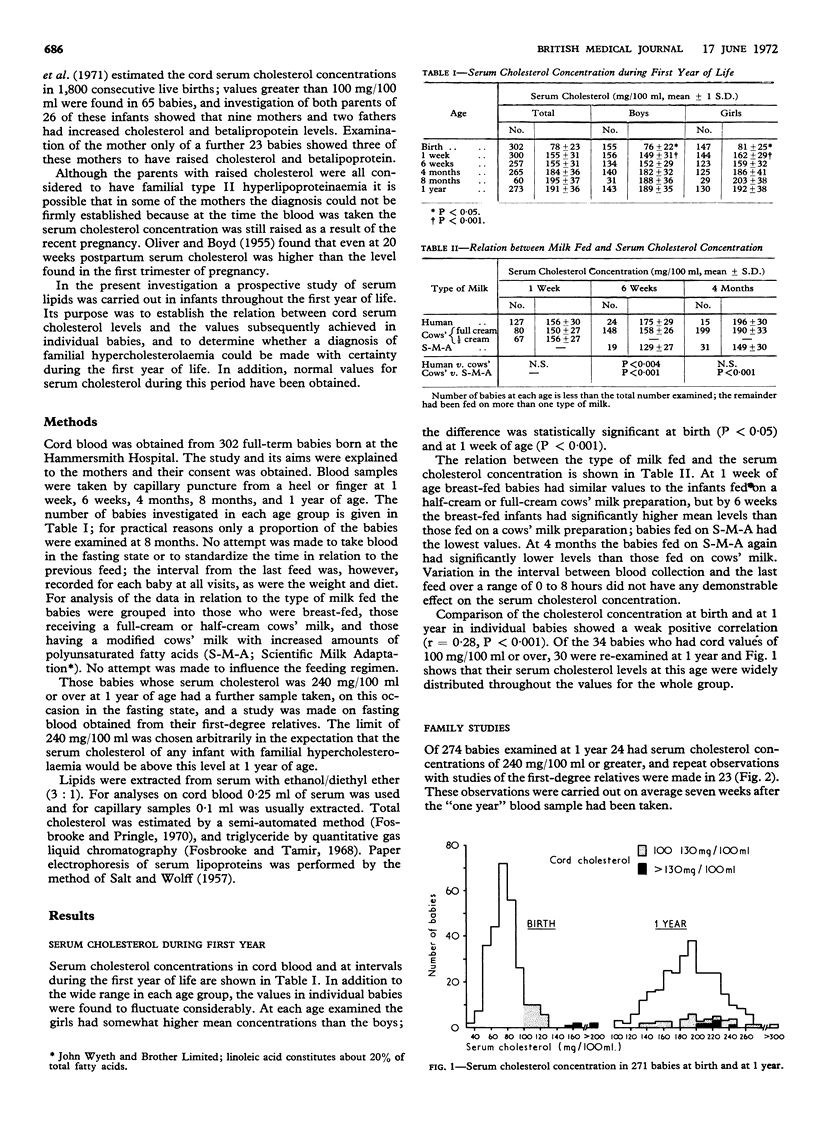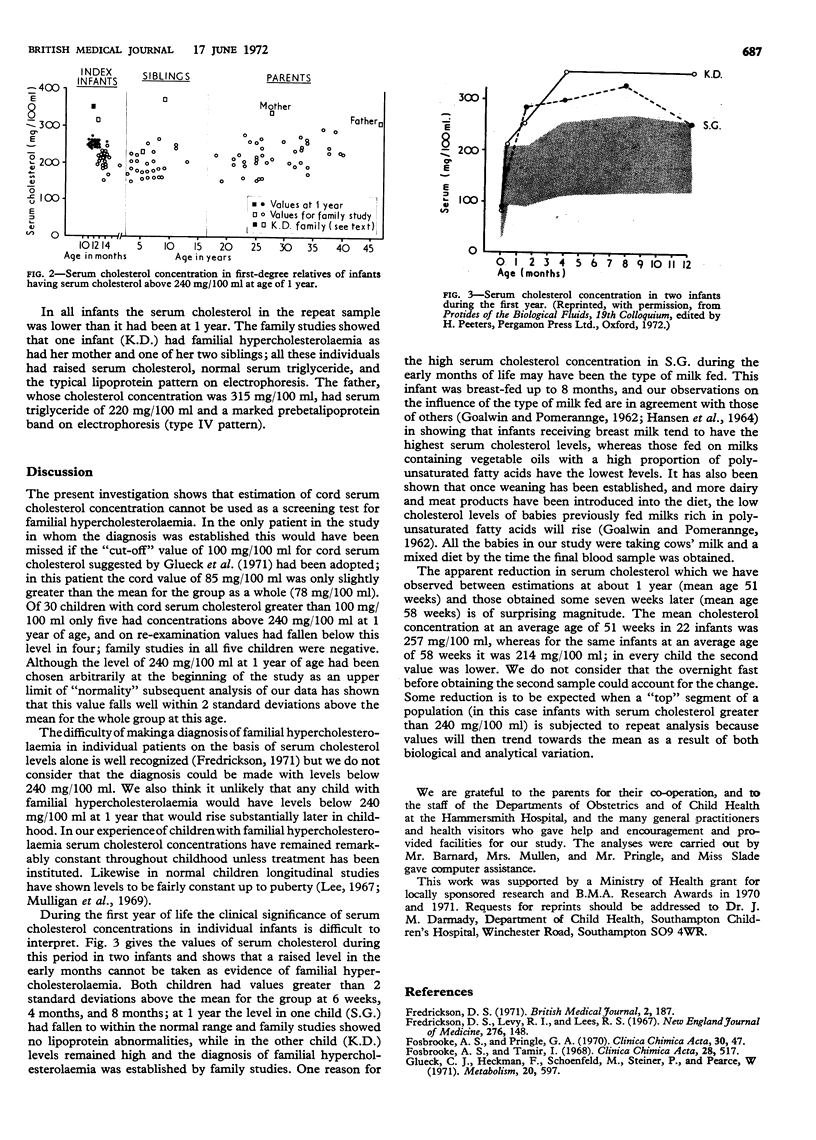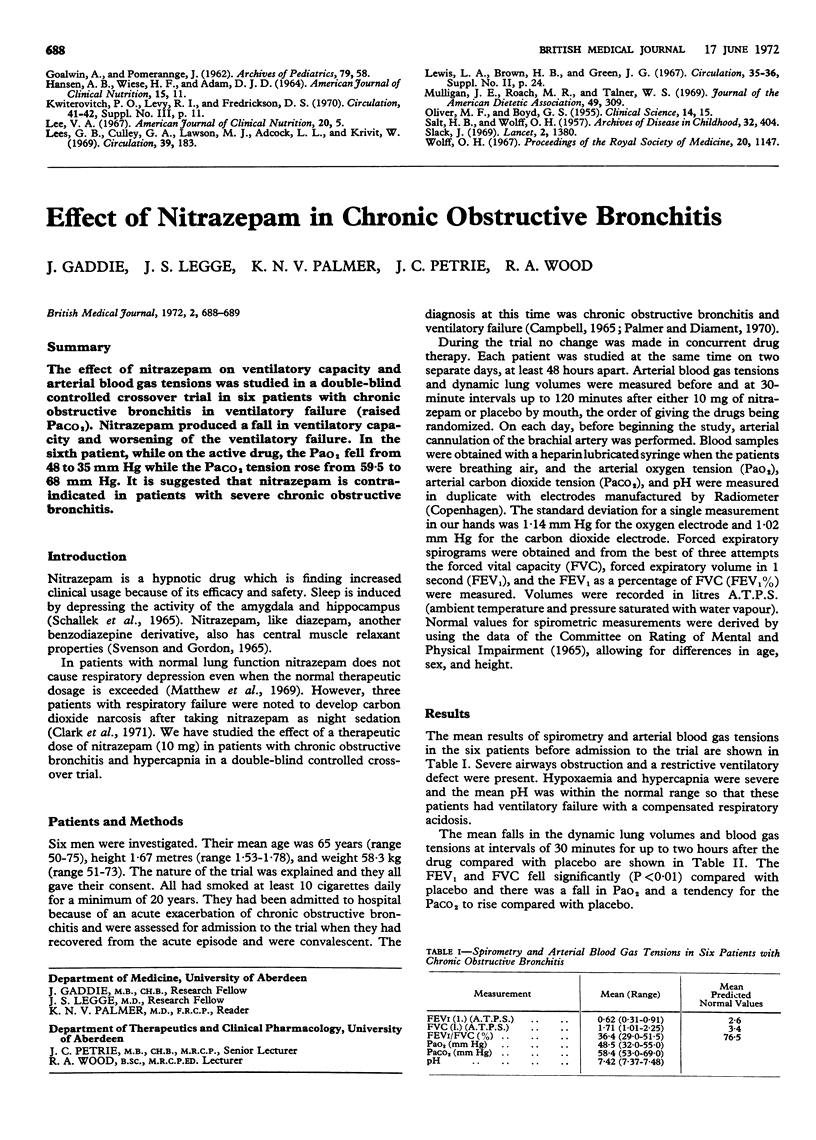Abstract
A longitudinal prospective study of serum cholesterol concentrations during the first year of life has been carried out in 302 healthy babies. The results show that serum cholesterol estimations in cord blood cannot be used as a screening test for the diagnosis of familial hypercholesterolaemia. The only child subsequently found to have the condition had a cord serum cholesterol of 85 mg/100 ml compared with the mean value for the group of 78 mg/100 ml. The babies who had cord values greater than 100 mg/100 ml had values distributed throughout the normal range when re-examined at 1 year of age. Serum cholesterol concentrations during the early months of life were markedly influenced by the type of milk fed; it is suggested that investigations to establish the diagnosis of familial hypercholesterolaemia are deferred until the child is about 1 year old and feeding with cows' milk and mixed diet is established.
Values obtained for serum cholesterol concentrations (mg/100 ml, mean ± 1 S.D.) in healthy infants in this study were: at birth 78 ± 23, at 1 week 155 ± 31, at 6 weeks 155 ± 31, at 4 months 184 ± 36, at 8 months 195 ± 37, and at 1 year 191 ± 36.
Full text
PDF



Selected References
These references are in PubMed. This may not be the complete list of references from this article.
- Fosbrooke A. S., Pringle G. A. Improved precision for the autoanalyser determination of serum cholesterol. Clin Chim Acta. 1970 Oct;30(1):47–52. doi: 10.1016/0009-8981(70)90191-9. [DOI] [PubMed] [Google Scholar]
- Fosbrooke A. S., Tamir I. A modified method for the preparation of methyl esters of a mixture of medium-chain and long-chain fatty acids. Application to the determination of serum triglyceride and non-esterified fatty acid composition and concentration by gas-liquid chromatography. Clin Chim Acta. 1968;20(3):517–522. doi: 10.1016/0009-8981(68)90311-2. [DOI] [PubMed] [Google Scholar]
- Fredrickson D. S., Levy R. I., Lees R. S. Fat transport in lipoproteins--an integrated approach to mechanisms and disorders. N Engl J Med. 1967 Jan 19;276(3):148–contd. doi: 10.1056/NEJM196701192760305. [DOI] [PubMed] [Google Scholar]
- GOALWIN A., POMERANZE J. Serum cholesterol studies in infants. A comparison of infants fed breast milk, evaporated milk and corn oil formula. Arch Pediatr. 1962 Feb;79:58–62. [PubMed] [Google Scholar]
- Glueck C. J., Heckman F., Schoenfeld M., Steiner P., Pearce W. Neonatal familial type II hyperlipoproteinemia: cord blood cholesterol in 1800 births. Metabolism. 1971 Jun;20(6):597–608. doi: 10.1016/0026-0495(71)90008-4. [DOI] [PubMed] [Google Scholar]
- Lee G. B., Culley G. A., Lawson M. J., Adcock L. L., Krivit W. Type II hyperlipoproteinemia in mother and twins. Circulation. 1969 Feb;39(2):183–188. doi: 10.1161/01.cir.39.2.183. [DOI] [PubMed] [Google Scholar]
- Lee V. A. Individual trends in the total serum cholesterol of children and adolescents over a ten-year period. Am J Clin Nutr. 1967 Jan;20(1):5–12. doi: 10.1093/ajcn/20.1.5. [DOI] [PubMed] [Google Scholar]
- OLIVER M. F., BOYD G. S. Plasma lipid and serum lipoprotein patterns during pregnancy and puerperium. Clin Sci. 1955 Feb;14(1):15–23. [PubMed] [Google Scholar]
- SALT H. B., WOLFF O. H. The applications of serum lipoprotein electrophoresis in paediatric practice. Arch Dis Child. 1957 Oct;32(165):404–412. doi: 10.1136/adc.32.165.404. [DOI] [PMC free article] [PubMed] [Google Scholar]
- Slack J. Risks of ischaemic heart-disease in familial hyperlipoproteinaemic states. Lancet. 1969 Dec 27;2(7635):1380–1382. doi: 10.1016/s0140-6736(69)90930-1. [DOI] [PubMed] [Google Scholar]
- Wolff O. H. Familial hyperlipidaemias. Proc R Soc Med. 1967 Nov 1;60(11 Pt 1):1147–1149. [PMC free article] [PubMed] [Google Scholar]


